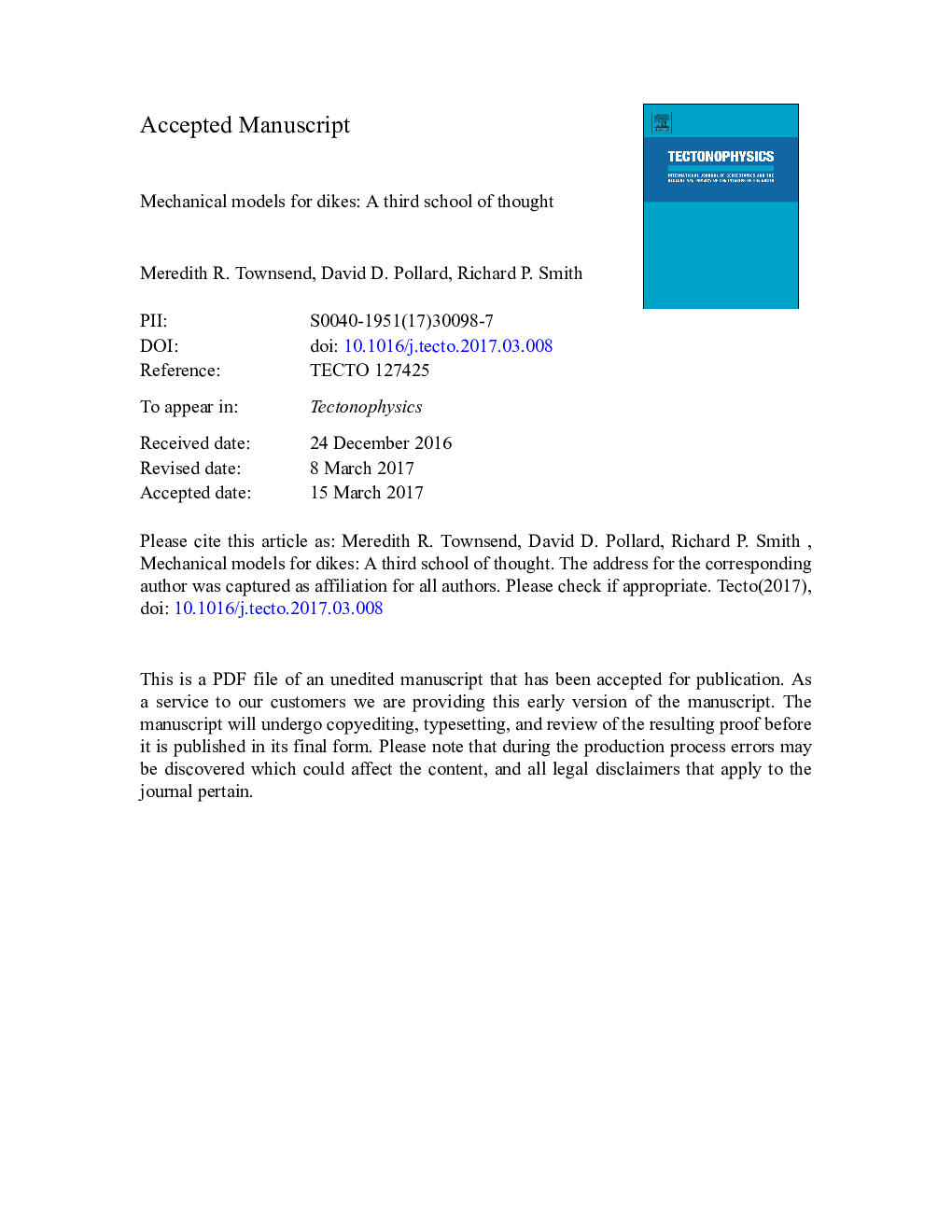| کد مقاله | کد نشریه | سال انتشار | مقاله انگلیسی | نسخه تمام متن |
|---|---|---|---|---|
| 5781644 | 1636700 | 2017 | 80 صفحه PDF | دانلود رایگان |
عنوان انگلیسی مقاله ISI
Mechanical models for dikes: A third school of thought
دانلود مقاله + سفارش ترجمه
دانلود مقاله ISI انگلیسی
رایگان برای ایرانیان
موضوعات مرتبط
مهندسی و علوم پایه
علوم زمین و سیارات
فرآیندهای سطح زمین
پیش نمایش صفحه اول مقاله

چکیده انگلیسی
Geological and geophysical data from continental volcanic centers and giant radial swarms, and from oceanic shield volcanoes and rift zones, indicate that dikes propagate laterally for distances that can be 10 to over 100 times their height. What traps dikes within the shallow lithosphere and promotes these highly eccentric shapes? Gravity-induced stress gradients in the surrounding rock and pressure gradients in the magma are the primary loading mechanisms; pressure gradients due to magma flow are secondary to insignificant, because the flow direction is dominantly horizontal. This configuration of vertical, blade-shaped dikes with horizontal dike propagation and magma flow is fundamentally different from the two dike model configurations described in a recent review paper as two schools of thought for mechanical models of dikes. In School I, a dike is disconnected from its source and ascends under the influence of buoyancy. In School II, a dike is connected to a magma reservoir and is driven upward by magma flux from the source. We review the geological and geophysical data supporting the vertical dike - horizontal flow/propagation configuration and suggest the abundance and veracity of these data in many different geological settings, and the modeling results that address this physical process, warrant adding this as a third school of thought. A new analytical solution for the boundary-value problem of a homogeneous, isotropic, and linear elastic solid with a vertical, fluid-filled crack is used to investigate the effects of gravitationally induced stress and pressure gradients on the aperture distribution, dike-tip stress intensity, and stable height. Model results indicate that in a homogeneous crust, dikes can achieve stable heights greater than a kilometer only if the host rock fracture toughness KIC ~ 100 MPa · m1/2. However, density stratification of the crust is an effective mechanism for trapping kilometer-scale dikes even if the host rock is very weak (KIC = 0). This analysis may explain why vertical dikes propagate laterally for great distances, but reside within a narrow range of depths in the crust.
ناشر
Database: Elsevier - ScienceDirect (ساینس دایرکت)
Journal: Tectonophysics - Volumes 703â704, 22 April 2017, Pages 98-118
Journal: Tectonophysics - Volumes 703â704, 22 April 2017, Pages 98-118
نویسندگان
Meredith R. Townsend, David D. Pollard, Richard P. Smith,